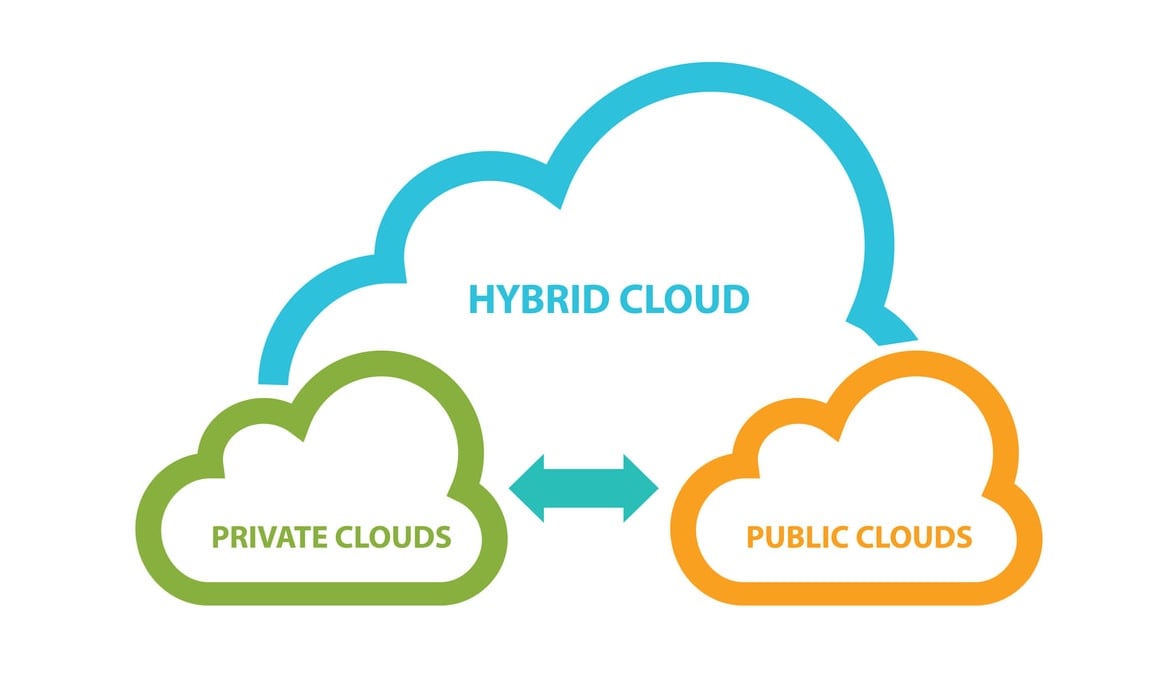How, What, Why’s of hybrid cloud orchestration?
Hybrid Cloud Orchestration
There has been a significant increase in the use of cloud computing technology over the last few years. This demonstrates a great opportunity for business innovation, especially those businesses wanting a secure and flexible infrastructure solution, which if we look at, is clearly what hybrid cloud solutions outline.
Hybrid cloud is attracting a lot of attention because of its ability to enable clients to utilize wide-ranging capabilities of public cloud while still utilizing private cloud deployment. Hybrid cloud mixes on-premise private cloud and third-party public cloud services with hybrid cloud orchestration platforms and allows an easy flow of workloads between private and public clouds. As computing requirements and investments evolve, hybrid cloud gives businesses greater flexibility and more data deployment options.
Orchestration is fairly new to the IT industry. Organizations are building huge data-centers with the latest virtualization technologies like VMWare and Hyper-V and eNlight 360 while trying to scale their operations.
Virtualization removed hectic of managing physical hardware, but many organizations struggled to manage the deployment of hybrid cloud and the daily management of all of this new capacity. Orchestration frameworks aim to resolve this issue with software-based tools. These tools help engineers in automating environments and speed up resource deployment.
Engineers have developed a liking for Orchestration. Orchestration tools like Ansible, Chef, and Puppet have become common sights in most infrastructures for application deployment and for maintaining virtual resources. Every tool will have varying pros and cons, but the basic goal is to create an outline that will be used to ensure that all the server resources are in sync with the standards of other resources. On the virtualization side, many service providers offer bundled products such as eNlight 360, Administrators can build automated deployment tasks on top of eNlight 360’s built-in orchestration tools and APIs.
A number of organizations depend on the efficiency of the orchestration tools for determining labour costs, production time and the overall workload efficiency to archive business goals. The efficiency of orchestration affects the total cost of many It projects directly. If a company is choosing Orchestration for their infrastructure management they must be completely aware of its benefits as well as its drawbacks before jumping blindly into uncharted territory.
Hybrid clouds have resources spanning from both private and public infrastructures, creating a new level of complexity which an orchestration platform should be able to handle. Orchestrating a new VM instance is just not enough, an orchestration tool in a hybrid cloud must be capable of determining the best location for deploying that instance, derived from factors like performance, cost, workload importance, and security requirements.
What is a typical hybrid cloud orchestration stack made of?
Although there isn’t one single stack or framework for orchestrating a hybrid cloud but let’s look at what a standard stack should include.
- The lowest level should comprise of local and public cloud resources like for e.g. computation, data storage and the networks requiring orchestration.
- The next level is the hypervisors like VMware ESXi, Microsoft Hyper-V, and the Linux Kernel-based Virtual Machine. The second level also consists of container engines generally installed in the data center. Private cloud is founded upon the virtual foundation of hypervisors and containers.
- The third layer houses the private cloud software, such as OpenStack or Apache CloudStack. Companies that use containers may use Kubernetes implementation as their container orchestration tool on this level.
- The last level consists of the hybrid cloud orchestration tool. IT teams can install this tool locally or it might be delivered as a managed service.
What are the challenges when adopting hybrid cloud orchestration?
Implementing and maintaining orchestration is not at all automatic even when orchestration is coupled with automation.
Deploying the orchestration tool is mostly easy for most IT teams while narrowing down the processes that need orchestration and how to do carry them out is way more complex. These requirements are unique in every organization. You will have to evaluate your IT processes very carefully, translate these processes into a code and keep updating them as needs from the business and users change.
Orchestration tools can also run into problems, while working with hybrid cloud, where the platform must adequately support both the private and public infrastructure. Although modern hybrid cloud orchestration tools are still at rudimentary stages, products like Ansible, eNlight 360 and Puppet are truly coming around with solutions well equipped to handle bugs and periodic updates that may affect existing runbooks. What’s more, IT teams can now easily ensure high performance by optimizing the software and the local hardware to supports it.
Security is not a significant concern in private clouds, where traffic and activity are confined to a local data center. But hybrid cloud orchestration tools can create additional risk, as they use APIs that aren’t always encrypted. Choosing orchestration tools with additional encryptions to secure the traffic on WAN network will go a long way.
Finally, don’t overlook network connectivity. Private cloud orchestration merely requires a LAN, but once an IT team extends orchestration to public cloud, adopting a reliable and responsive WAN connection will keep the workload running efficiently. In some cases, an existing internet connection between the public and private clouds might be adequate. However, most enterprises will opt for a redundant, high-speed internet connection or a dedicated low-latency connection to the public cloud, such as a direct connect.
Hybrid cloud adoption comes with obvious potential to support rapid organization growth offering business continuity, more opportunities for innovation, increased speed to the markets, improved connectivity and highly secure systems.
With the flexibility Hybrid cloud provides orchestration tools are on the rise. Learn all about Hybrid cloud orchestration and how to choose the best one fit for your organization.
- Discover How: IoT Drives the Future of Banking & Financial Industry - August 24, 2020
- SD-WAN Securing Dynamic Networks - June 10, 2020
- How Secure is Serverless Computing? - April 26, 2019

